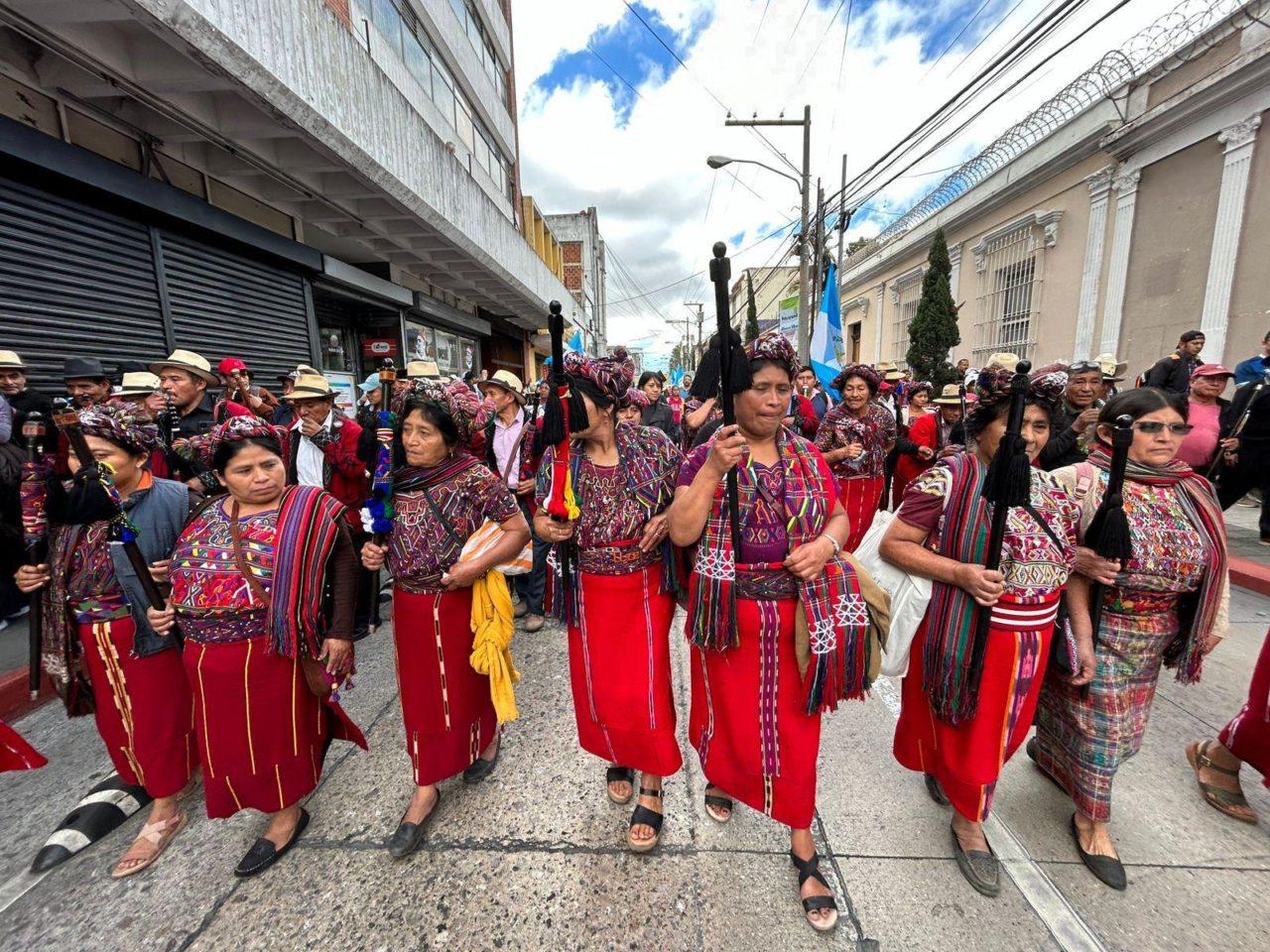The year 2023 will be remembered in the country as the year when indigenous community and authorities led the resistance to rescue democracy. They faced a corrupt system that has been entrenched in all state institutions for years. Thanks to this struggle, indigenous peoples have changed their relationship with society and established a new institutional bond with the new government. Although this indigenous mobilization has been striking, it is the result of accumulated efforts over the past 20 years. The role they played in defending Guatemalan democracy positions indigenous authorities as a political alternative and opens new possibilities for the country's democratization.
The war that Guatemala experienced in the second half of the last century focused, in its final phase, on the Maya communities of the highlands, which became the targets of scorched earth policies. After the conflict ended, rural depopulation, migration, organized crime, and state corruption hindered the recovery of community life. Despite these challenges (or perhaps because of them), as a multicultural policy led by the so-called Maya Movement was unfolding through national actors, many communities began to rearticulate their institutions.
After the signing of peace accords, the figure of indigenous mayorships specifically, began to be resumed, reorganized, or recreated around the resurgence of community law, Maya spirituality, and local specialists. Meanwhile, in other municipalities, powerful local power structures did not enter these dynamics and continued to function as usual, like the Indigenous mayorships of Chichicastenango and San Juan Sacatepéquez.
These processes of recreating community institutions are very diverse and other dynamics also help to reconstitute the community fabric. In all cases, there is a rearticulation with new actors, such as women, youth, and migrants, who also begin to become fundamental elements, despite the fact that a more gerontocratic and patriarchal community hierarchy did not admit them. Additionally, many local leaders and activists reintegrate into their communities after the war.
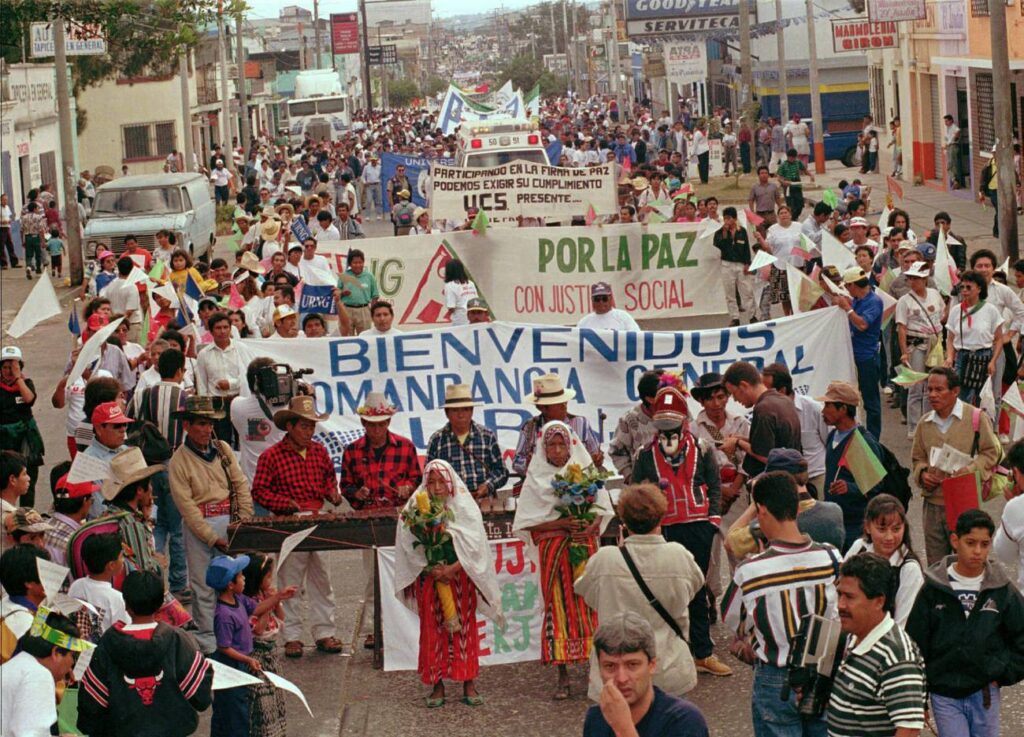
Changes in Indigenous mobilization
When extractivism took root in Guatemala through mining, hydroelectric, and agribusiness projects, the defense of nature was organized from a community and territorial base, with the support of traditional authorities. In some areas, the struggle and resistance led to processes of community renewal, both in leadership and cultural aspects, particularly among younger generations.
Perhaps the most well-known and compelling evidence of this were the good-faith community consultations that began in 2005 in Sipacapa and spread across half the country. Nearly 1,000,000 people from around 80 municipalities expressed their opposition to extractive activities in their territories. This consensus was achieved thanks to the authorities and the organization of community structures: teachers, improvement committees, evangelical pastors, catechists, and, in many places, the COCODEs (Community Development Councils).
The historical accumulation of the indigenous movement became evident in 2015, when the mobilizations against the corruption of then-president Otto Pérez Molina led to his imprisonment.
All this represents a shift in indigenous politics, which had been tied to the peace process through the so-called Maya Movement. This movement had operated with national-level actors, trained or supported by community actors. Now, it is the community actors who are forming or moving regionally, giving a territorial character to politics, from the community upwards. Actors unable to connect with this community action have practically disappeared from the political scene.
The historical accumulation of the indigenous movement became evident in 2015, when the mobilizations against the corruption of then-president Otto Pérez Molina led to his imprisonment. During those days, the mobilization outside the capital was very strong but less visible. When these mobilizations reached the capital from the territories, the ancestral indigenous authorities were there to assume a political presence as inclusive representatives of the indigenous peoples of Guatemala.
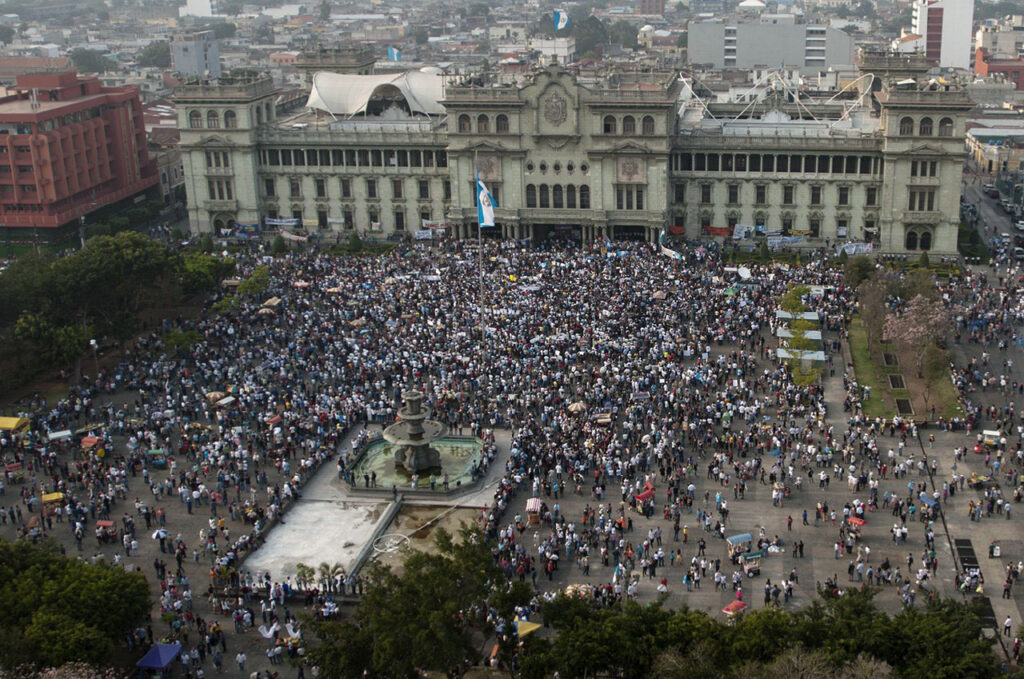
Indigenous electoral participation
This entire process represents a consolidation from the community base of the logic of self-determination and reconstitution as indigenous peoples, reinforcing their identity and actions rooted in their own traditions. Additionally, it is accompanied by the idea that these peoples are autonomous political subjects with their own knowledge, confronting a state perceived as racist and colonial. Thus, there is a growing demand for a plurinational state.
The process of reconstitution toward self-determination is closely linked to an increasingly clear interest in electoral politics. As early as 2015, the Council of Maya Peoples began participating electorally in alliance with Convergencia, a leftist political option. In response to everything that transpired that year, the Peasant Development Committee decided to form the Movement for the Liberation of Peoples (MLP) and emphasized the need for a popular plurinational constituent process.
The results of these elections did not meet expectations: the options from organized indigenous groups barely secured representation in Congress or local governments. Nonetheless, their role was pivotal for what transpired afterward.
The results of these elections did not meet expectations: the options from organized indigenous groups barely secured representation in Congress.
For the 2019 elections, the political spectrum in which Maya and community interests felt represented expanded. This spectrum had previously been linked to the Guatemalan National Revolutionary Unity (URNG) and the indigenous party Winaq, but now it also included the CPO and the MLP, which, under the leadership of Thelma Cabrera, achieved an impressive fourth place that alarmed the ruling powers.
In relation to the 2023 elections, the significant presence of indigenous actors across various candidacies was notable. Although the Movement for the Liberation of Peoples lost its presidential ticket due to the judicial onslaught of a corrupt pact, it made a strong push with its proposal of “Volcancito visto volcancito marcado.” However, the results of these elections did not meet expectations: the options from organized indigenous groups barely secured representation in Congress or local governments. Nonetheless, their role was pivotal for what transpired afterward.
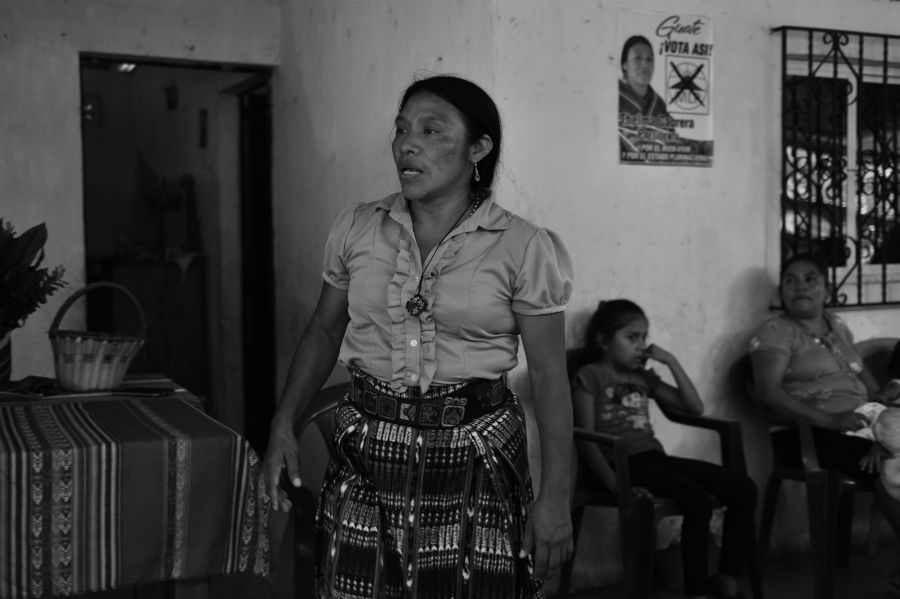
Community centrality in the peaceful revolution of 2023
In the context of a systematic boycott of all options that could challenge the Guatemalan regime, the movement that currently embodies the desire for change is Semilla. This party also emerged from the mobilizations of 2015 but has very little connection to indigenous issues, despite its progressive nature. The modest 12 percent of the votes it received in the first round was enough to raise accumulated expectations, and in the runoff election, its presidential candidate, Bernardo Arévalo, received 60 percent of the votes.
This victory was met with judicial persecution aimed at preventing him from taking power, organized by the Public Ministry with the complicity of the Constitutional Court and the Supreme Court of Justice. Mobilizations from various sectors quickly followed, and a race began to reach the planned inauguration date of January 14, 2024. The boycott was so intense that the indigenous community authorities, led by the 48 Cantones of Totonicapán and the Indigenous Municipality of Sololá, called for an indefinite national strike to demand the removal of Attorney General María Consuelo Porras.
The general mobilization called by the community authorities saved democracy in Guatemala. The popular support allowed the winning duo and the entities supporting them to present themselves strongly in confrontations and negotiations with corrupt actors.
The general mobilization called by the community authorities saved democracy in Guatemala. The popular support allowed the winning duo and the entities supporting them to present themselves strongly in confrontations.
Indigenous community actors called for roadblocks on highways, streets, and their own territories. Additionally, other urban and university actors joined the strike, resulting in 180 paralyzed locations across the country. It became a true, peaceful, and joyful popular uprising. In the occupied squares and blocked roads, there was music and dancing, ecumenical prayers, and passive resistance to police eviction attempts. Guatemala showed itself to be a society capable of being happy and free while demanding respect. It was not a strike organized by organizations or prominent figures, but by self-convened groups.
After 106 days of symbolic occupation at the entrance of the Public Ministry, Bernardo Arévalo assumed the presidency, and the first thing he did was visit the sit-in at 3:00 a.m. to express his gratitude. The general mobilization called by the community authorities saved democracy in Guatemala. The unrestricted and noisy popular support allowed the winning duo and the entities supporting them to present themselves strongly in confrontations and negotiations with corrupt actors. International attention secured diplomatic support for Arévalo, and the stance of the United States was decisive.
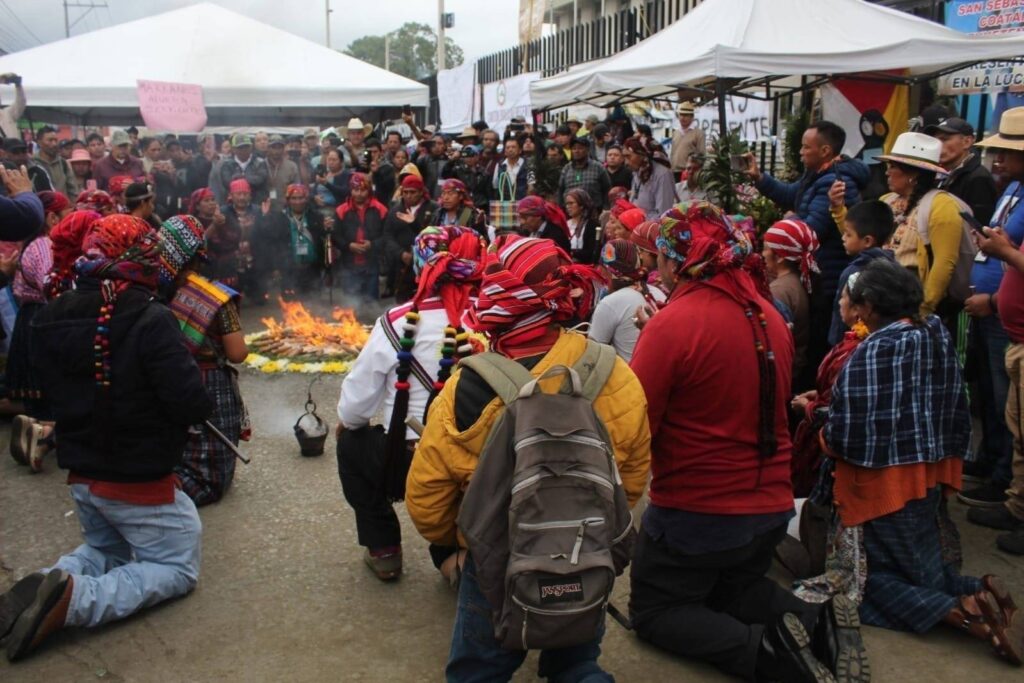
From democratic defense to institutional participation
In a scenario of democratic fragility, this episode gave rise to a certain optimism regarding the possibility of reversing the trend towards the consolidation of an authoritarian State. For this, indigenous subjects organized around community authorities was fundamental. Thanks to their capacity for mobilization, the community authorities emerged as a legitimate and honest political actor, which consolidated themselves as one of the great actors in the defense of democracy.
From this position, both community authorities and other indigenous actors are taking advantage of their role in recent events and the democratic will of the government to demand more participation in institutional life. However, the chances of their requests being fulfilled are also limited. Arévalo’s government is clearly urban, ladino and middle class. His presidency does not propose structural changes and his real probability of achieving profound transformations in Guatemalan politics and the economy is low.
In the face of this, indigenous voices emerged, demanding more indigenous presence both in the government and in the entire administration. The government has responded by accepting some proposals in middle management and local development plans have also been agreed to. The appointment of departmental governors, an attribution of the President based on shortlists proposed by civil society, opened a long and complicated process. Finally, of the 22 positions available, nine went to Mayan authorities.
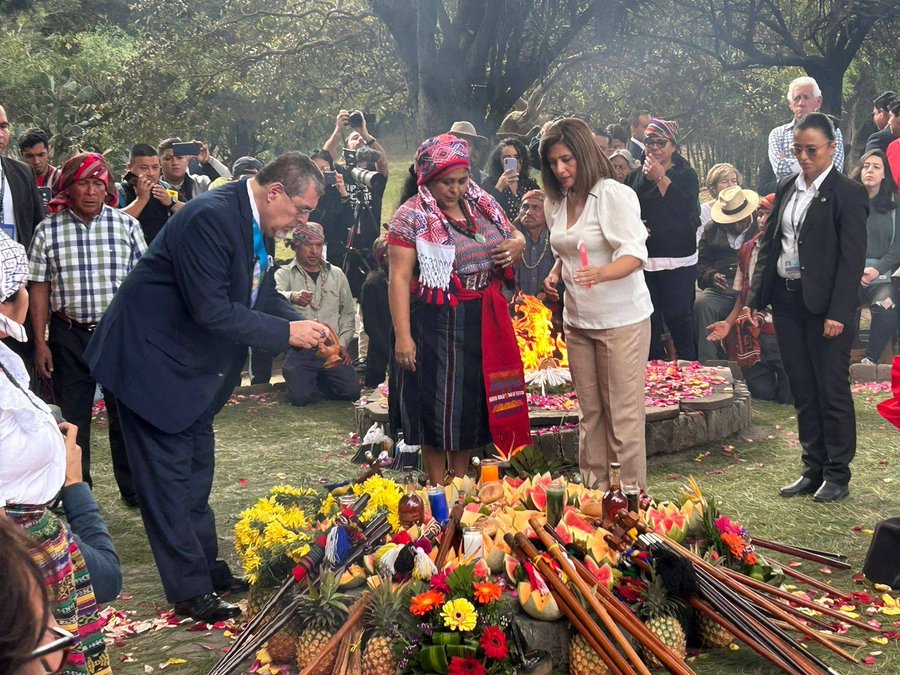
Communities, their authorities, and recent politics
Indigenous participation in the defense of democracy and their mobilization power were striking. However, this mobilization of indigenous community authorities is not unexpected. For at least 20 years, they have been working as a political entity representing their communities (and indigenous peoples beyond their own communities) in dealings with the State. Moreover, they have been trained in defending a series of rights protected by international law, such as self-determination, prior consultation, traditional justice, and territorial rights.
Thus, they advance in their reconstitution as peoples and confront a predatory State that, after the multicultural mirage, once again considers them a hindrance to development, which now relies on extractive activities. As the political situation deteriorates, they increasingly turn to the electoral route, becoming an alternative that society begins to accept. Ultimately, when the Guatemalan State enters a crisis and contradictions erupt, it is community politics that are used to unlock the situation. In this way, a form of participation that has been developing for some time is consolidated: participation in politics from within their communities as community actors.
Therefore, these communities and their authorities achieve something that had not been accomplished with the peace agreements nor with all the multiculturalism: the recognition of indigenous peoples as top-tier political actors in Guatemala. While the possibilities of achieving their historical demands are not very concrete, a new phase in the relationship between indigenous peoples and the State seems to be opening up, with greater participation of community authorities in state structures.
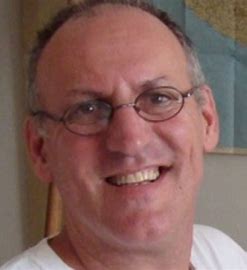
Santiago Bastos Amigo is a researcher at the Center for Research and Higher Studies in Social Anthropology (CIESAS), Southeast Regional Unit (Mexico), and a member of Prensa Comunitaria.
